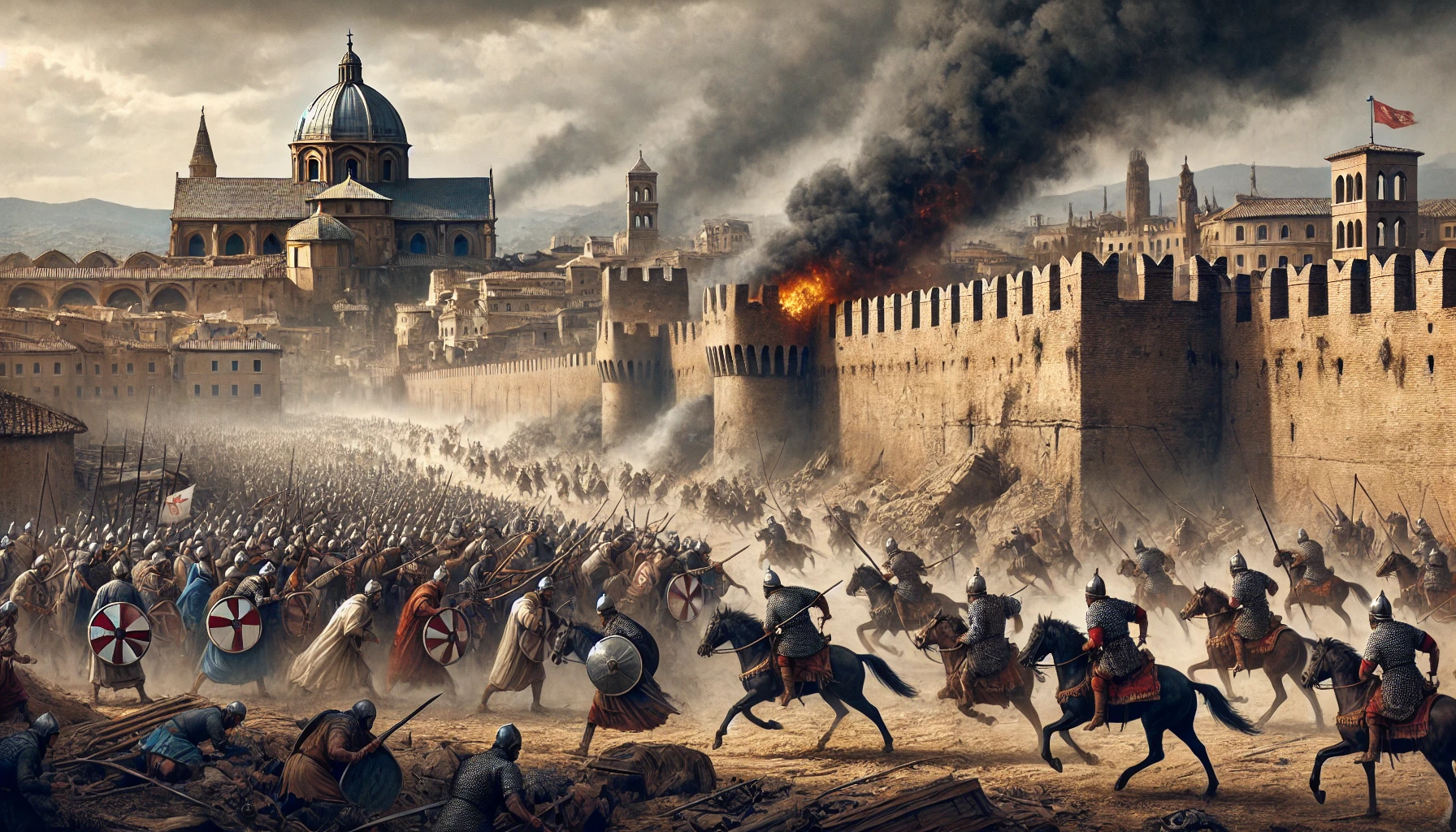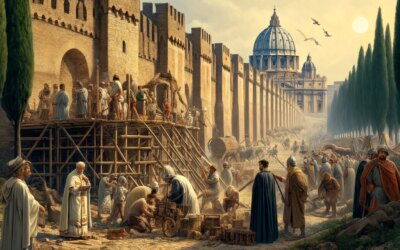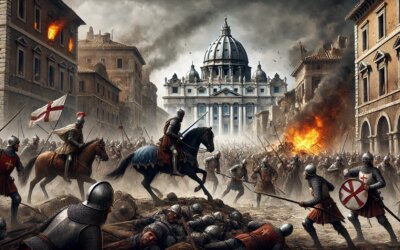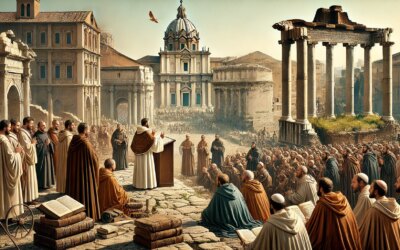A New Threat to Rome
By the 9th century, the once-mighty Rome was a vulnerable city, struggling to defend itself from external threats. Among the most fearsome dangers were the Saracen raids, carried out by Muslim forces from North Africa and Sicily. These incursions posed a grave risk to Rome’s security and forced the papacy to take drastic measures to protect the city.
The Saracen Attack of 846
One of the most infamous raids occurred in 846 CE when a fleet of Saracen ships landed near the mouth of the Tiber. The attackers bypassed the city’s crumbling Aurelian Walls and headed straight for the richest and most sacred sites: St. Peter’s Basilica and the Basilica of St. Paul Outside the Walls. These sites, located outside Rome’s main defenses, were ransacked, their treasures looted, and relics desecrated.
Rome’s Response and the Rise of Fortifications
Pope Leo IV, recognizing the urgent need for stronger defenses, initiated the construction of the Leonine Walls, a fortified enclosure around the Vatican. Completed in 852 CE, these walls transformed the Vatican into a secure stronghold, safeguarding St. Peter’s from future incursions.
The Frankish Alliance
To counter the Saracen threat, the papacy sought military aid from the Frankish rulers. King Louis II of Italy, part of the Carolingian dynasty, launched campaigns to drive the Saracens out of central Italy. His efforts, combined with those of local militias and papal forces, gradually pushed the invaders back.
Legacy of the Saracen Raids
The Saracen attacks on Rome highlighted the city’s vulnerability in the early medieval period. They spurred defensive reforms, increased reliance on Frankish protection, and solidified the papacy’s role as a temporal power. Though the immediate threat faded, the memory of these raids lingered, influencing Rome’s military strategies for centuries.
Rome’s Survival Through the Ages
The 9th-century Saracen incursions were among the many trials Rome endured throughout its long history. Each crisis, however, led to adaptations and reinforcements, ensuring that the Eternal City would continue to stand despite the changing tides of war and conquest.






